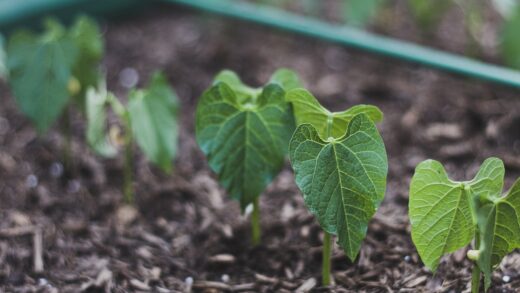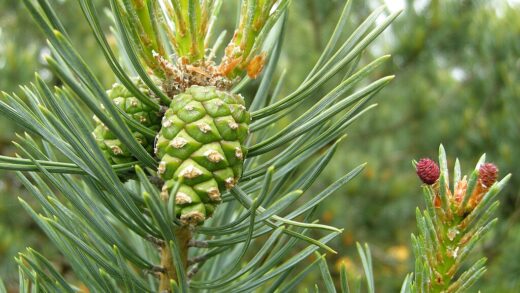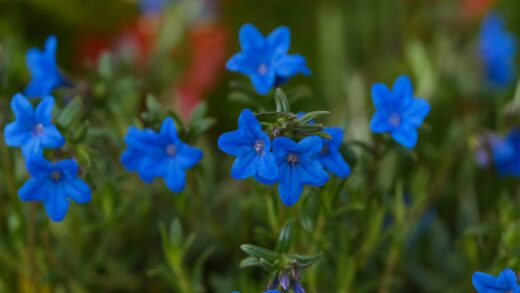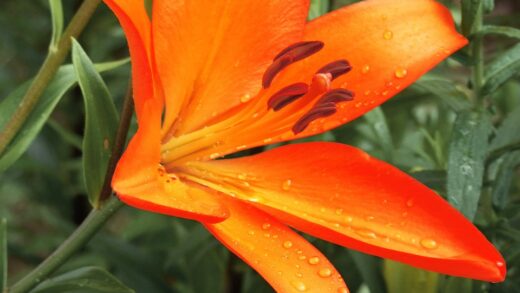Regular and strategic pruning is an indispensable practice for the successful cultivation of apple-scented mint, transforming it from a potentially unruly plant into a well-behaved, productive, and attractive garden feature. Far from being a mere chore, trimming is a form of communication with the plant, encouraging it to grow in a way that is both aesthetically pleasing and beneficial for a continuous harvest. The inherent vigor of mint means that without regular intervention, it can quickly become tall, leggy, and sparse, with woody lower stems and leaves that are less flavorful. A consistent pruning regimen promotes a dense, bushy habit, stimulates the production of fresh, tender foliage, and helps to keep the plant’s energetic growth within its designated boundaries. Mastering a few simple pruning techniques is the key to maintaining a healthy, beautiful, and bountiful mint patch.
The primary reason to prune apple-scented mint is to encourage a bushier growth habit. When you trim the tip of a stem, you are removing the apical bud, which produces hormones that suppress the growth of the side buds further down the stem. Once this apical bud is gone, the side buds are released from this hormonal suppression and are stimulated to grow, developing into new lateral branches. This process, repeated all over the plant, is what creates a full, dense, and compact shape, preventing the lanky, sprawling appearance that an unpruned mint plant will inevitably develop.
This encouragement of new growth has a direct and positive impact on the quality of your harvest. The youngest leaves and stems on a mint plant are the most tender and contain the highest concentration of the flavorful essential oils that give it its signature apple-like aroma. Regular trimming ensures that the plant is constantly producing a fresh supply of this desirable new growth. If left to its own devices, the plant will focus its energy on vertical growth and flowering, and the lower leaves will become old, tough, and less aromatic.
Pruning is also a critical tool for managing the plant’s health and appearance. By selectively removing stems, you can improve air circulation through the center of the plant. This is one of the most effective ways to prevent common fungal diseases like powdery mildew and rust, which thrive in stagnant, humid conditions. Additionally, removing any yellowing, damaged, or diseased leaves as soon as you see them helps to keep the plant looking tidy and prevents the potential spread of pathogens.
Finally, pruning plays a vital role in delaying or preventing the flowering process. While the small, white or pinkish flower spikes are attractive to pollinators, allowing the plant to flower and set seed can be detrimental to its culinary quality. When a mint plant begins to flower, it signals a shift in the plant’s life cycle, and its energy is diverted from leaf production to reproduction. This often results in the leaves developing a slightly bitter taste and a less potent aroma. By regularly trimming the stems and snipping off any flower buds as they appear, you can keep the plant in a vegetative state, focused solely on producing the flavorful leaves you desire.
More articles on this topic
Best times for pruning
The timing of your pruning activities can greatly influence the plant’s response. For apple-scented mint, pruning is not a once-a-year event but rather an ongoing process throughout the entire growing season, from spring through to autumn. The most frequent type of pruning is the light, regular trimming that is synonymous with harvesting. You can begin this type of pruning as soon as the plant is well-established and has reached a height of about 15-20 centimeters. This can be done every few weeks during the peak growing period.
In addition to this regular harvesting, it is beneficial to perform a more substantial pruning, or “shearing,” two to three times during the growing season. A good time to do this is when you notice the plant is starting to look a bit overgrown or is beginning to develop flower buds. For this rejuvenation pruning, you can cut the entire plant back by about one-third to one-half of its height. This will stimulate a flush of dense, new growth from the base and the lower nodes, effectively refreshing the entire plant.
A particularly important time for a hard prune is in the mid-summer, after the plant’s first major flush of growth. This can prevent the plant from becoming woody and unproductive during the hottest part of the year. This mid-season shearing will ensure you have a healthy and productive plant for a second major harvest in the late summer and early autumn. Always water the plant well after a significant pruning to help it recover and fuel the new growth that will follow.
The final pruning of the year should take place in the late autumn, after the first frost has signaled the end of the growing season. At this point, it is best to cut the entire plant back to just a few centimeters above the ground. This hard-end-of-season prune removes all the old and potentially diseased foliage, helps to prevent pests from overwintering in the plant debris, and prepares the plant for its winter dormancy. This tidies up the garden and ensures the plant directs all of its energy into its roots for a strong start the following spring.
More articles on this topic
Techniques for trimming and harvesting
The most common and beneficial pruning technique for apple-scented mint is what is often referred to as “pinching back,” which is essentially how you should harvest the herb. Instead of just plucking individual leaves, it is far better for the plant if you use scissors or your fingers to snip off the top 5-10 centimeters of each stem. You should make your cut just above a set of leaves or a leaf node. This is precisely the action that removes the apical bud and encourages the two side buds at that node to grow into new stems.
When you harvest in this manner, you are multitasking. You are gathering the youngest, most flavorful leaves for your kitchen while simultaneously shaping the plant and encouraging it to become bushier. If you only ever pick the large, lower leaves, you are not stimulating this beneficial branching growth, and the plant will continue to grow tall and spindly from its tips. A good rule of harvest is to never remove more than one-third of the plant’s total foliage at any one time, which ensures it has enough leaf area remaining to photosynthesize effectively and recover quickly.
For a larger harvest, perhaps for making a big batch of mint tea or jelly, you can gather several stems together and cut them back at once. Again, aim to cut them back by about a third of their length, making sure to leave plenty of foliage on the plant. This more substantial harvesting acts as a mini-rejuvenation prune and will be followed by a vigorous flush of new growth. This is a great way to manage the plant’s size while also stocking your pantry.
It is also important to regularly inspect the plant for any stems that are not variegated and are producing only solid green leaves. This is known as reversion, and it can sometimes occur in variegated cultivars. These reverted stems are often more vigorous than the variegated ones and, if left unchecked, can eventually take over the entire plant, causing it to lose its special ornamental quality. These solid green stems should be pruned out right back to their point of origin as soon as you spot them.
Rejuvenation and hard pruning
Over the course of the growing season, even with regular trimming, an apple-scented mint plant can start to look tired, woody, or leggy. This is when a more drastic rejuvenation prune is called for. This process involves cutting the entire plant back significantly, typically by about half to two-thirds of its height, down to a healthy set of lower leaves. This may look severe, but a healthy mint plant is incredibly resilient and will respond with a burst of fresh, tender new growth from the base.
The best time for this type of hard pruning is typically in the early to mid-summer, just as the plant may be thinking about flowering. This shearing effectively resets the plant for the second half of the season. After cutting it back, it is a good idea to water it well and perhaps provide a very light feeding with a balanced liquid fertilizer to give it the energy it needs to produce a new flush of leaves. Within a few weeks, you will be rewarded with a compact and refreshed plant ready for a new round of harvesting.
This technique is also very useful for plants that have been affected by a pest or disease issue. For example, if a plant has a significant infestation of aphids or a case of powdery mildew, cutting it back hard and disposing of the removed foliage can be a very effective way to get rid of the problem. The new growth that emerges is often clean and healthy, giving you a fresh start. It is a simple, non-chemical way to manage common garden ailments.
The end-of-season hard prune is the most severe of all. As winter approaches, cutting the plant down to just above the soil level is the standard practice for herbaceous perennials like mint. This removes the old stems that will die back in the winter anyway and allows the plant to enter dormancy cleanly. It prevents pests and diseases from finding a winter home in the dead foliage and ensures that all the plant’s energy is stored safely underground in the rhizomes, ready to fuel the explosive growth of the following spring.
Pruning to control spread
Pruning and trimming also play a crucial role in controlling the famously invasive spread of apple-scented mint. While the most effective control method is to use physical barriers like containers or sunken root guards, pruning can help manage the plant’s above-ground and at-surface spread. Mint spreads not only by underground rhizomes but also by surface runners. These are stems that creep along the ground and can root down wherever a node touches the soil, creating a new plant.
Regularly inspect the perimeter of your mint patch for any of these wandering stems. When you find them, you can simply prune them back to the main clump. This prevents the plant from “walking” across your garden bed and establishing new colonies. This is particularly important if your mint is planted as an edging plant along a lawn or pathway, as it will constantly try to venture into the neighboring territory.
In addition to pruning the horizontal runners, it is also important to control the plant’s desire to spread by seed. As mentioned earlier, regular trimming to prevent flowering is the first line of defense. By cutting off the stems for harvesting or shearing the plant back before the flower buds have a chance to open, you eliminate the possibility of seed production. While mint primarily spreads via its root system, preventing seed dispersal is still a good practice for overall garden management.
Finally, the act of “spade pruning” can be a very effective, albeit more aggressive, control method. This involves using a sharp spade or lawn edger to cut a deep line in the soil around the designated boundary of your mint patch once or twice a season. This severs the underground rhizomes that are trying to escape, preventing them from spreading further. The combination of regular top pruning, trimming of surface runners, and periodic root pruning will give you the control you need to enjoy this wonderful herb without it taking over your garden.
















